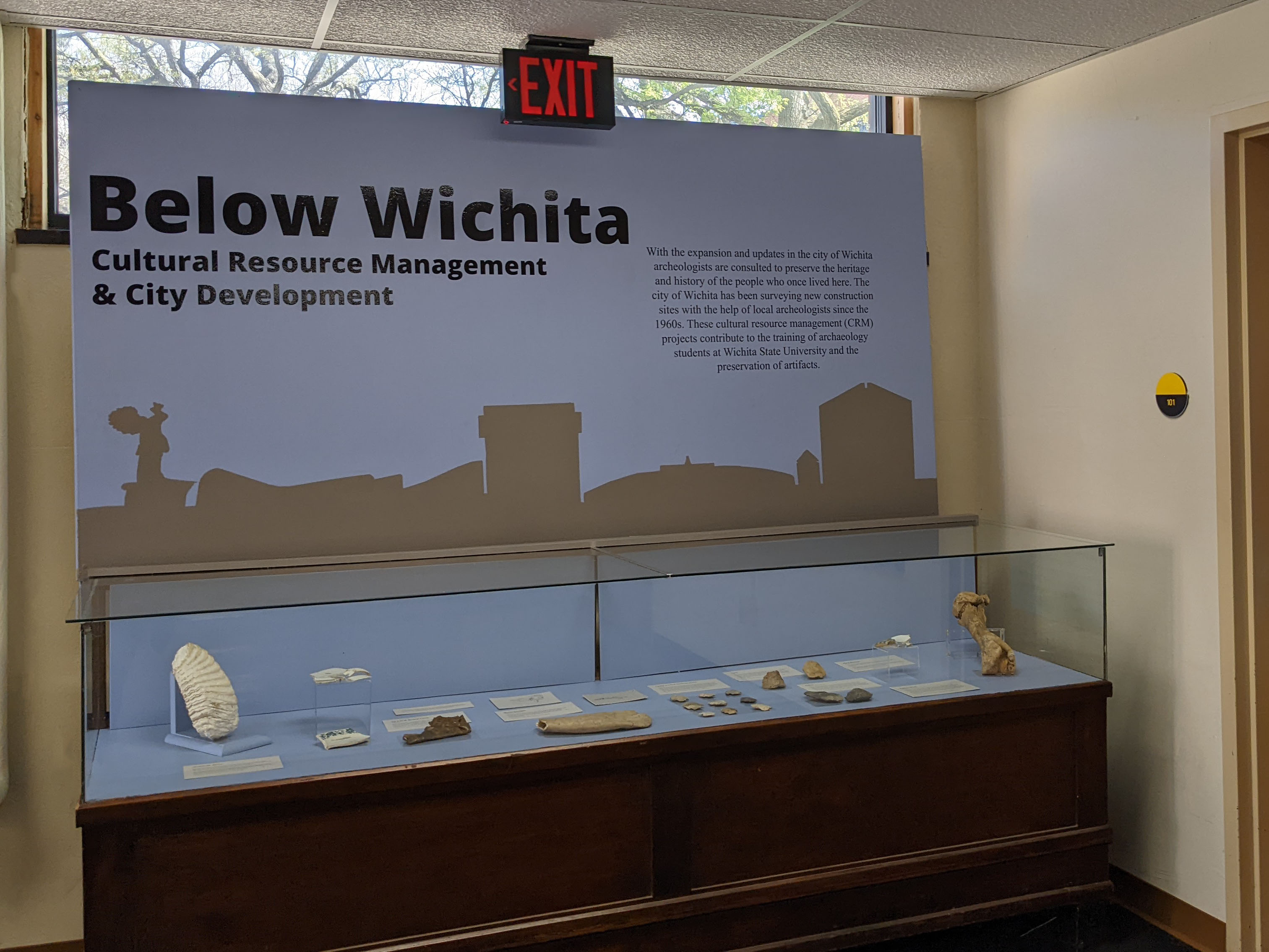Below Wichita: Cultural Resource Management and City Devopment
This exhibition "Below Wichita: Cultural Resource Management and City Development" was designed and constructed by Angie Guevara & Gracie Tolley
Special thanks to:
Museum Director: Rachelle Meinecke
Professor & City Archaeologist: Crystal Dozier
Assistant City Archaeologist: Brogan Gilmore
Curator of Collection: Ria Morgan
With the expansion and updates in the city of Wichita, archeologists are consulted to preserve the heritage and history of the people who once lived here. The city of Wichita has been surveying new construction sites with the help of local archeologists since the 1960s. These cultural resource management (CRM) projects contribute to the training of archaeology students at Wichita State University and the preservation of artifacts.
Cultural Resource Management
Cultural resource management includes investigating buildings and surfaces, landscapes, artifacts, documents, and archaeological surveys to protect limited historical and cultural resources. CRM looks at these remnants as indicators of past human activity and investigates, manages, and preserves them in accordance with governmental regulation. For archaeologists, this means unearthing artifacts that can be researched to provide information for the interpretation of the area.
City Development
Infrastructure design and building are not the only aspects of city development. The historical preservation of objects and features of those who came before us plays an important role. Once archaeological and historical sites are destroyed, there is no recovery possible. That is why, in order to recover irreplaceable fragments of our history, modern technologies and skills of excavation and testing are used. This is done by a team of city archaeologists whose goal is to assess the area.
Indigenous People Acknowledgment
The Lowell D. Holmes Museum of Anthropology wishes to recognize that pieces of the collection it houses are cultural objects that were crafted by Indigenous people. Holmes seeks to broaden and deepen our understanding of human experiences. Objects discovered through Cultural Resource Management tell the narrative of the people who formerly lived on this land and their way of life.
The Holmes acknowledges the locality of the museum resides on ancestral lands belonging to the Osage, Gáuigú (Kiowa), Wichita and Očhéthi Šakówiŋ (Sioux) people. Displacement and the forced removal of the native tribes of Kansas were a result of colonization. We aim to honor and support the ancestral peoples who cared for the land.
Mammoth Molar
Mammoths once roamed most of North America and northern Asia. Besides in isolated areas, Mammoths became extinct about 10,000 years ago due in part to environmental changes and hunting.
This molar could provide more information about the mammoth's diet and age with further research. Molars, like other teeth, change with age from the grinding of food between the back teeth.
L2022.02.001 Lowell D. Holmes Museum of Anthropology
Tin Can & Broken China
14SG560
Cultural resource management uncovers what life was like in the past by looking at the physical refuse people left behind. Bauscher Weiden, a German porcelain company, made two of these pieces of china. The larger of the two was purchased through Arthur Schiller & Co, who was the American distributor of the china starting in 1930.
L2022.01.002-L2022.01.002.008 Lowell D. Holmes Museum of Anthropology
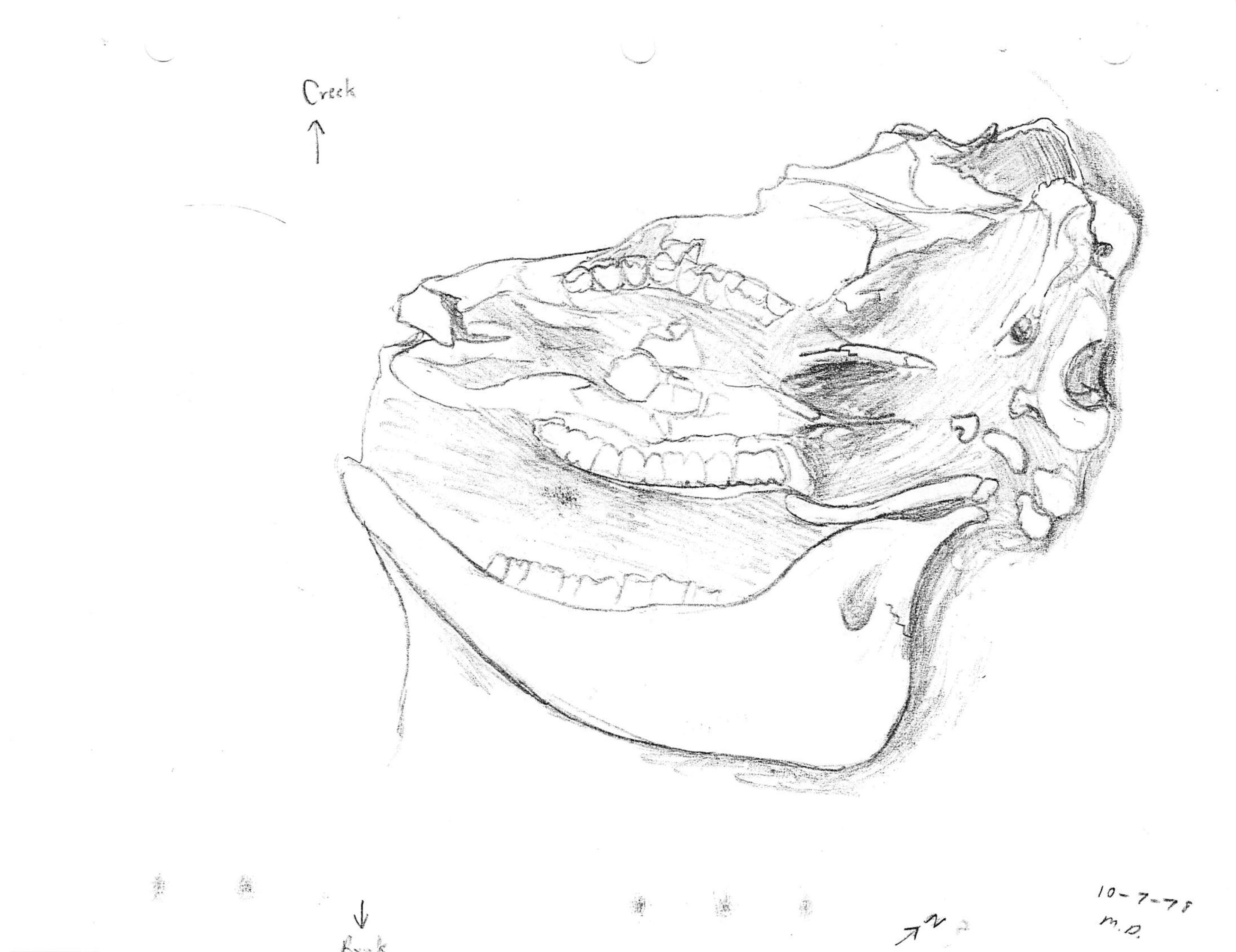
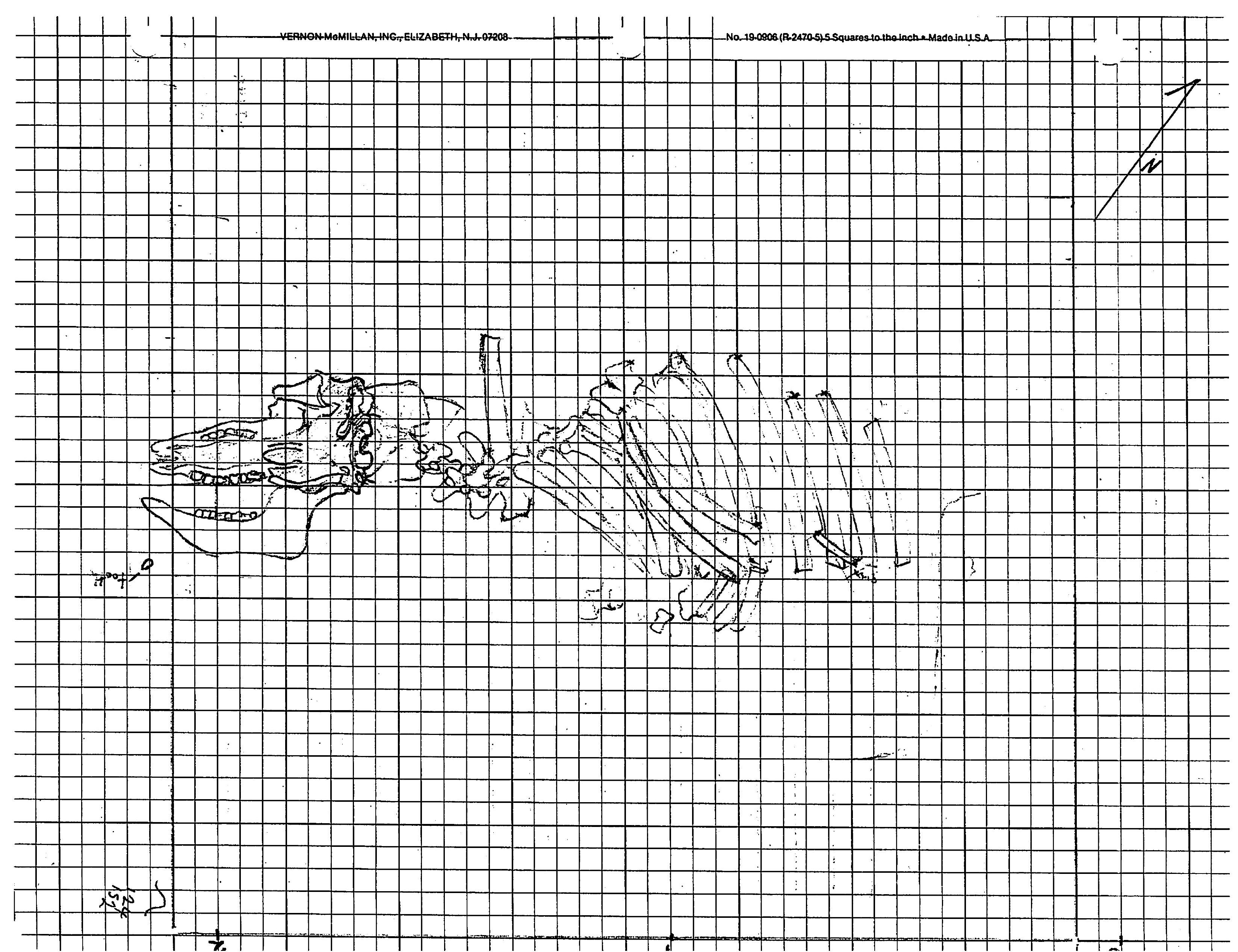
Mark Davis, a former assistant city archaeologist, drawings of bison skull, vertebrae, and rib cage during a survey of the Bryant Site (14SG528) in 1979.
Images courtesy of City Archaeologist Office
Bison Mandible
14SG528, Bryant Site
Among varied projectile points and other partial skeletal remains, this bison mandible was found eroding in a stream bank. Mandibles are essential to bison as it allows them to graze on grasses and the occasional berries. This example has 5 segments of teeth, each with its own ridge pattern.
L2022.01.027 Lowell D. Holmes Museum of Anthropology
Corner Notched Projectile Points
14SG538
There are varied forms of projectile points found in the Great Plains. The corner notched form is identifiable with its haftling area, the side of the stem of the point, and having some of the material removed in the corner where the stem and blade meet. These examples have been broken at the tip of use, such as hunting. It’s common to dispose of broken points rather than attempt to rework them. These points were classified as Woodland types, dating from 1000 B.C.E. to 1000 C.E.
L2022.01.013- L2002.01.021 Lowell D. Holmes Museum of Anthropology
Cores
14SG521
Through repeated flint-knapping, or flaking, a bifacial core is produced. Cores are masses of stone that taper towards the edges where flakes were removed. These larger stone finished tools were used by hunter-gatherer groups as a scraper and blades due to their sharp edges. Although these two cores differ in size and color—one being smaller and dark brown and the being larger and light brown—both had the same purpose.
L2022.01.011 & L2022.01.012 Lowell D. Holmes Museum of Anthropology
Bifaces
14SG563, Vanfossen Site
Bifaces are recognizable by having both sides, or faces, flaked. The edges of the artifact are narrow and widen towards the center with noticeable wear. Wear is typical of bifaces as they were utilized to scrape hides, butcher game, and used to carve wooden tools. Bifaces were also used to make leather for clothes. These two bifaces of the Vanfossen site narrow towards the edges and widen in the center with an ovoid pattern of wear. Both are gray, white, and brown in hue.
L2022.01.009 & L2022.01.010 Lowell D. Holmes Museum of Anthropology
Pottery Sherd
14SG521
Fragments of broken pottery, which American archaeologists call “sherds”, vary in size, shape, and manufacturer techniques. Depending on the pottery type, a “crazing” effect can appear in the glaze layer where multiple fine cracks are connected in a network formation, as seen in the examples. Other sherds have a blue-on-white floral pattern. Varied widths are indicative of whether the piece was a vase, plate, or another vessel form.
L2022.01.022- L2022.01.026 Lowell D. Holmes Museum of Anthropology
Bison Humerus
14SG558, Lacie Site
Plains bison are a native species to the area and were an important animal for the indigenous people, who used it for both food and tool making.
The humerus is a bone that goes between the elbow and the shoulder in the upper appendage. Since bison are quadrupeds, the humerus is larger to handle the stress from walking on four legs.
L2022.01.001 Lowell D. Holmes Museum of Anthropology
Sites of Wichita
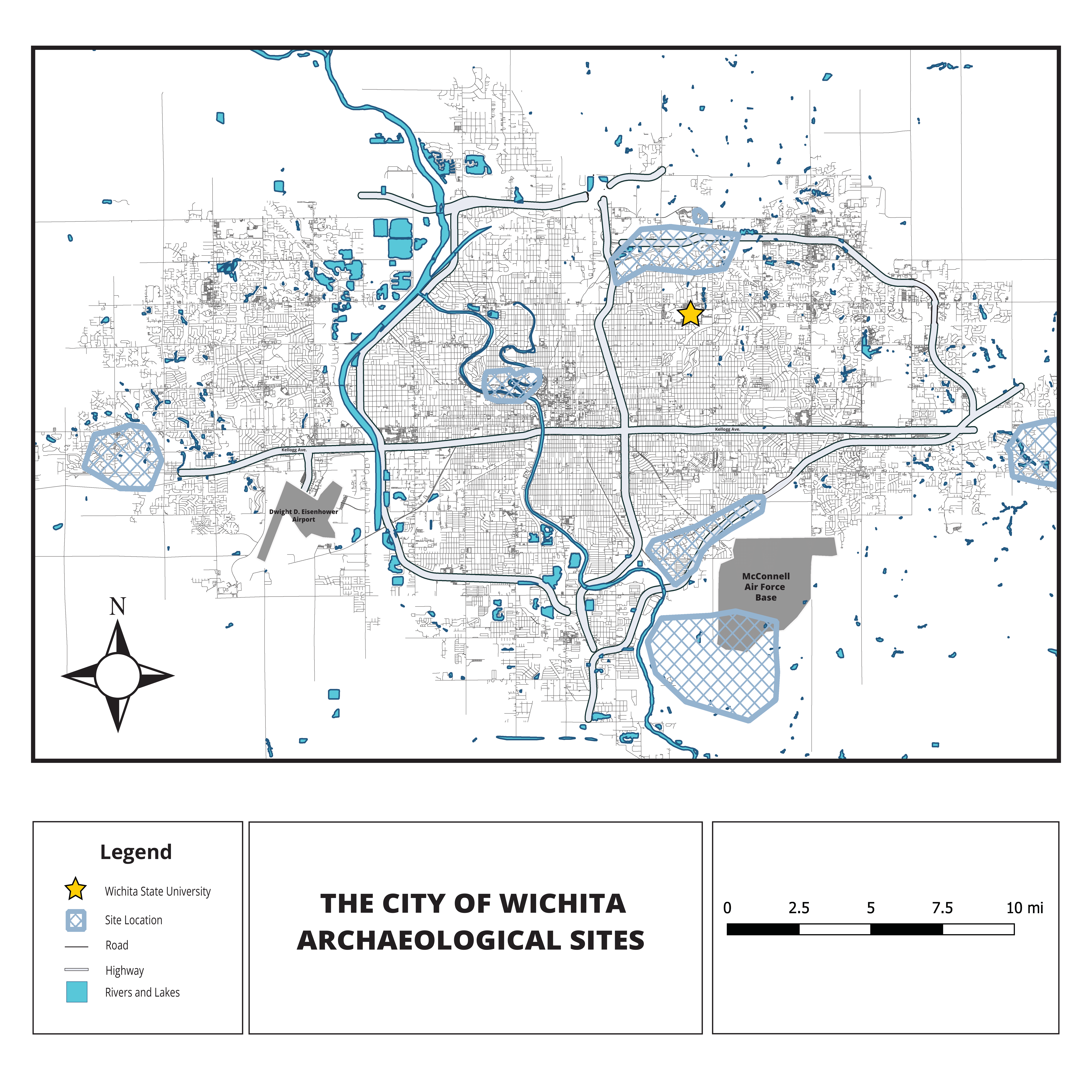 Painted Turtle
Painted Turtle
Painted Turtle (14SG515) is a pre-Columbian Native American site located along a section of Gypsum Creek, one-half mile west of Oliver and one-quarter mile south of Pawnee. The archaeological site was identified as a multicomponent site by the Archaeological Association of South Central Kansas in 1978. In 1981, the site was distinguished as a local landmark by the City Commission. From the site, cord-marked pottery with small corner-notched projectile points were recovered and identified. Archaeological remains from the site have been radiocarbon tested, and the results dated at 1,010 A.D. + 75 years.
Gypsum Creek
Located above the Arkansas River Valley, Gypsum Creek (14SG15) is a pre-Columbian Native American site that has been reviewed by the city on multiple occasions. The most recent report from 2007 was reviewed in preparation for bank stabilization and a flood water control system. There were no cultural materials recovered at the site other than bison remains. Still, work like this is important, as this investigation reestablished the boundaries of the adjacent Hackberry site (14SG508). Lithic flakes, a stone tool, and other bone fragments were recovered from Hackberry.
Chisholm Creek Park
The City Archaeologist office was requested to conduct an archaeological survey along Chisholm Creek Park North in support of possible accessibility improvements to the park. This survey used shovel test pits to see if any archaeological materials had been buried. No artifacts or evidence of cultural resources were found, so alterations to the park could proceed.
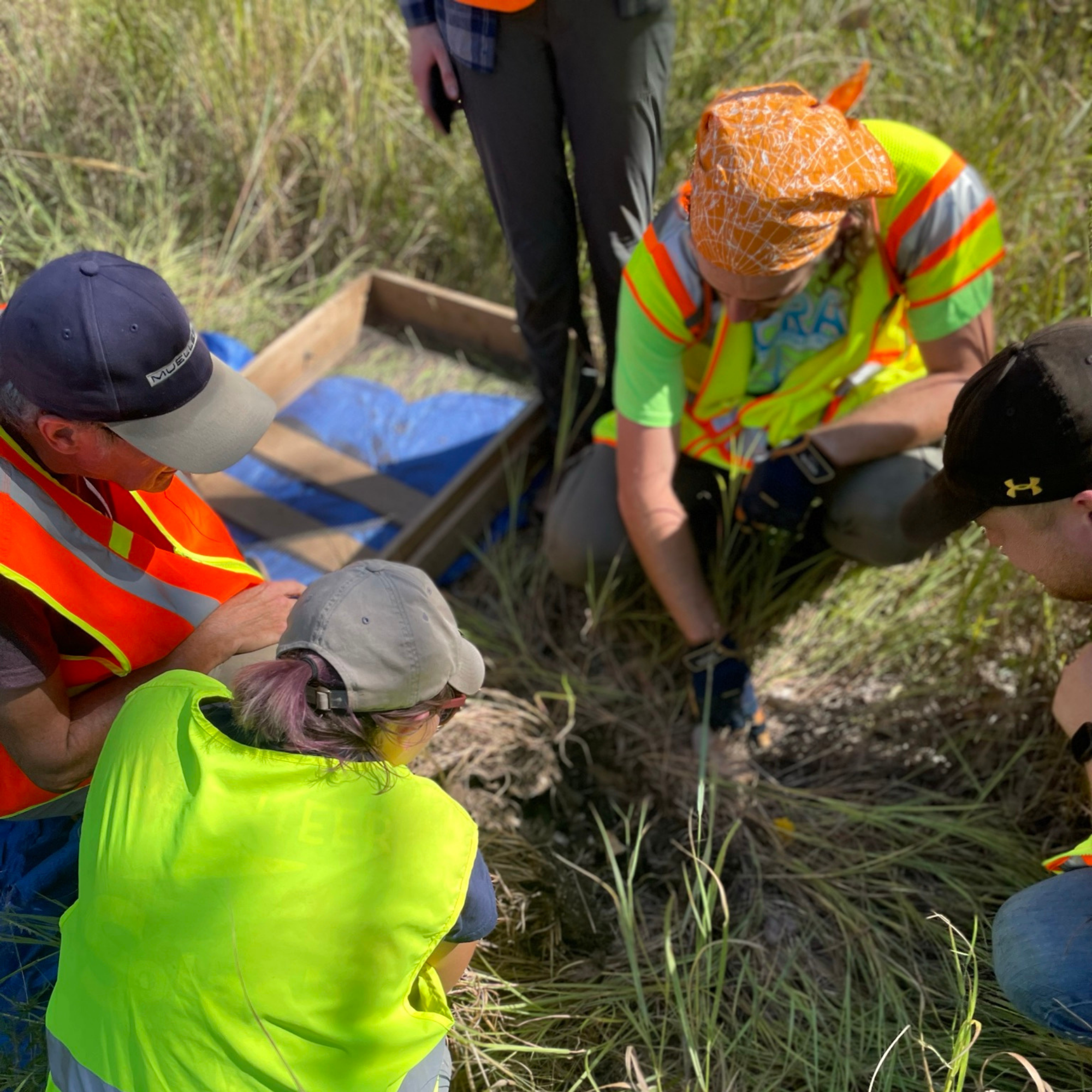
Students (Jen Banks, Arland Wallace, Laura Kennard, Thane Reid, Alex Stevenson, clockwise from bottom) examine a turtle nest next to a shovel test pit. Notes about natural resources at potential sites of development are important to note as well as cultural resources.
Photo courtesy of Crystal Dozier
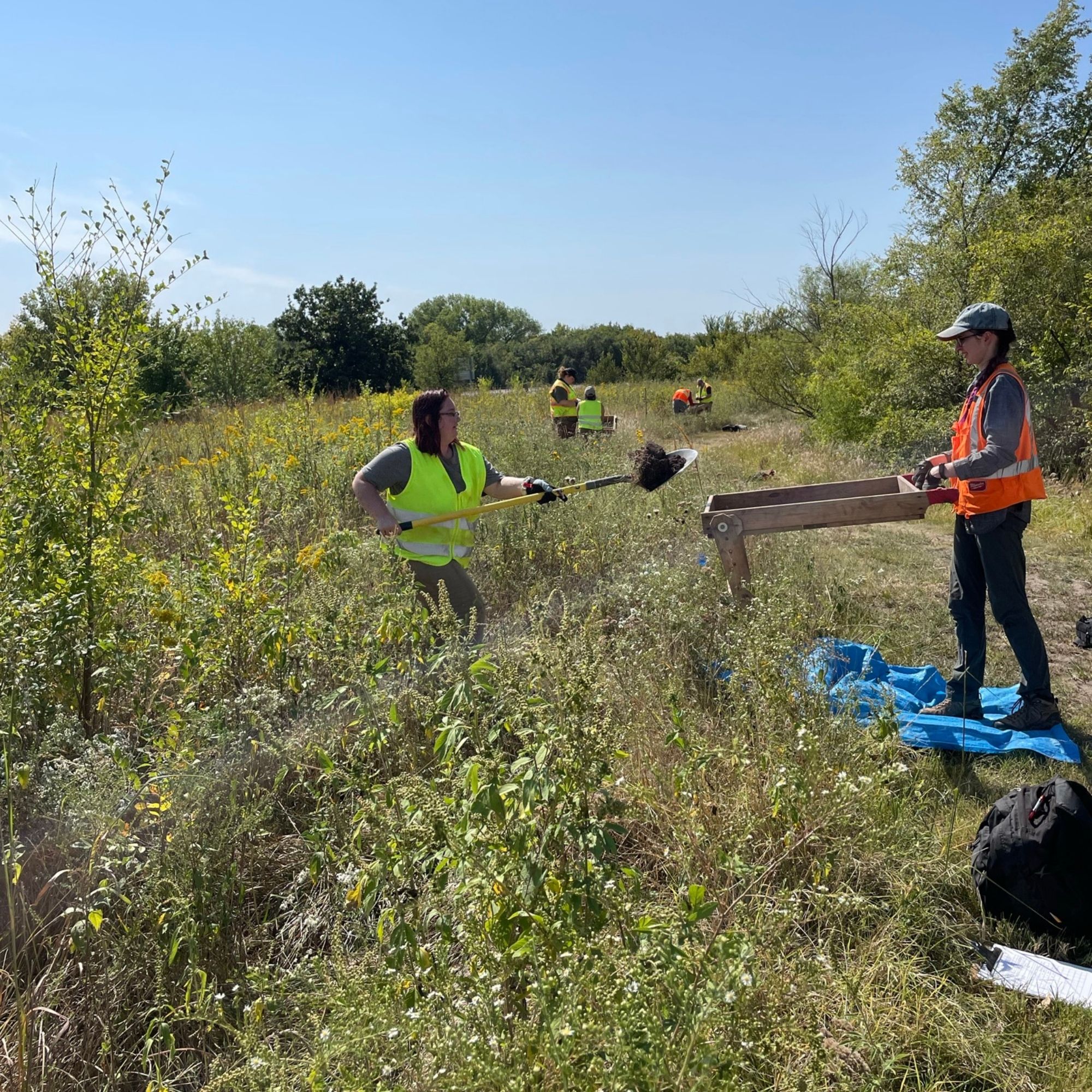
Emily Kleiner (left) and Laura Kennard (right) put the shovel test sample through a sifting screen. The screen ensures that any small artifacts can be identified and recovered. These methods are standard practice within archaeology and required by the Kansas State Historic Preservation Office.
Photo courtesy of Crystal Dozier


